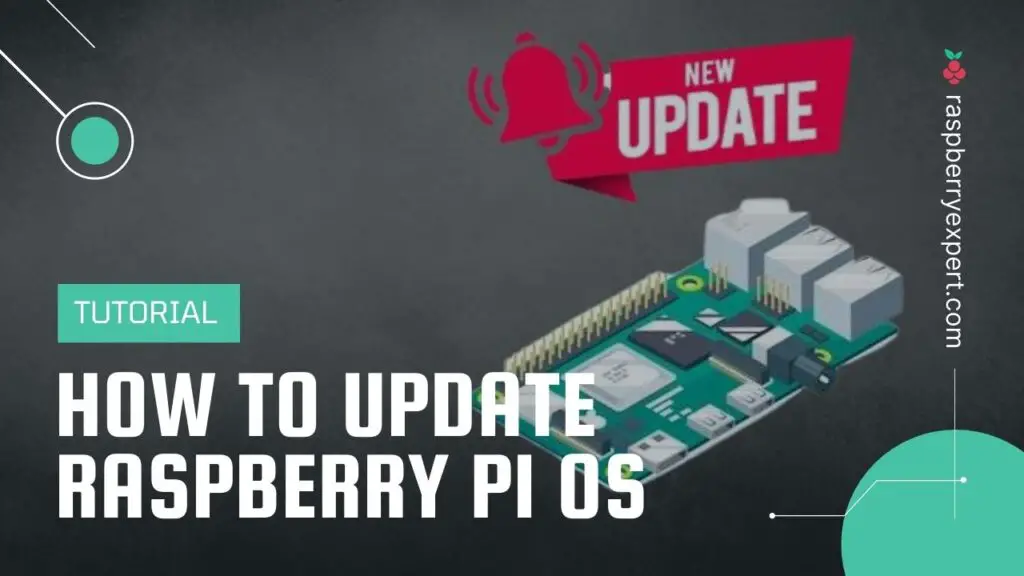Are you tired of physically tethering yourself to your Raspberry Pi for every update, feeling like a digital Sherpa lugging code uphill? The ability to remotely update your Raspberry Pi isn't just a convenience; it's a necessity for efficient project management, robust security, and maximizing the potential of your device.
Imagine this: you're miles away, enjoying a well-deserved break, when a critical security patch is released. Without remote access, you're left with a frustrating choice: either interrupt your downtime or risk leaving your device vulnerable. The solution? Mastering the art of the remote update.
Remote update capabilities are particularly advantageous for several reasons. First and foremost, it allows users to stay updated without the need to physically be present, especially if a device is located in a remote area. Moreover, it provides the capacity to execute updates rapidly and efficiently, which prevents security vulnerabilities and guarantees optimal functionality. Furthermore, remote updates are extremely useful for those with multiple devices deployed across a network. Instead of handling each Raspberry Pi separately, the user can automate and coordinate all updates through a centralized interface. This method saves precious time, decreases the danger of human error, and guarantees consistency across all deployments. It is useful not only for individual use but also for IoT device management and industrial projects.
So, what exactly does remote update raspberry pi download mean? Simply put, its the process of updating your Raspberry Pis software or operating system without being physically present near the device. Its goal is to make device updates easier and reduce risks.
This guide will walk you through everything you need to know, from setting up remote access to executing updates securely. Updating your Raspberry Pi remotely ensures that your device runs the latest software, patches vulnerabilities, and improves overall functionality. This will update all of your installed packages to their latest versions.
Lets delve into the specifics of making this powerful capability a reality. The process can be broken down into a few essential stages.
First and foremost, ensure your Raspberry Pi is connected to the internet. This is the lifeline for receiving updates. Next, you'll need to establish a secure remote access method. Two popular options are SSH (Secure Shell) and VNC (Virtual Network Computing). Both offer different advantages, depending on your needs.
SSH is a command-line interface that allows you to securely connect to your Raspberry Pi from a remote location. Its ideal for executing terminal commands, including software updates. VNC, on the other hand, provides a graphical user interface, mirroring the Raspberry Pi's desktop. This makes it easier to navigate the system and perform tasks like installing software through a familiar interface.
To set up SSH, you'll typically need to enable it on your Raspberry Pi. This is often done through the Raspberry Pi configuration tool or by editing a configuration file. Once enabled, you can connect to your Raspberry Pi from any device on the same network or the internet (with appropriate port forwarding configured on your router) using an SSH client like PuTTY (for Windows) or the built-in terminal on macOS and Linux.
For VNC, youll need to install a VNC server on your Raspberry Pi. One popular choice is TightVNC. Once installed and configured, you can use a VNC client like VNC Viewer to graphically remote in. With SSH and VNC access set up, we have all we need to remotely administer our raspberry pi devices.
Use these steps to set up the popular tightvncserver service:
- Install TightVNC Server: Open a terminal on your Raspberry Pi and run the command:
sudo apt-get update && sudo apt-get install tightvncserver - Set a Password: After installation, run
tightvncserver. You will be prompted to set a password for VNC access. - Configure the VNC Server: A default configuration file will be created. You can customize it by editing the file:
~/.vnc/xstartup. For example, you might add lines to launch a desktop environment. - Start the VNC Server: Run
tightvncserver :1. The ":1" indicates the display number. - Connect from a VNC Client: On your remote computer, use a VNC client (like VNC Viewer) and connect to your Raspberry Pi's IP address followed by the display number (e.g., 192.168.1.100:1).
One common method for updating software is to use the apt package manager. Open an SSH session to your Raspberry Pi, then run the following commands:
sudo apt update: This command refreshes the package lists, making sure your system knows about the latest available software.sudo apt upgrade: This command will install all the latest versions of your current installed software.
These commands will update all of your installed packages to their latest versions. Remember that you will need to type your password when using sudo.
Now, lets move on to advanced methods and considerations. For those managing multiple Raspberry Pis, the idea of individually updating each device might sound daunting. Fortunately, there are solutions to manage and automate the update process across multiple devices.
One such solution is to use configuration management tools such as Ansible or Chef. These tools allow you to define the desired state of your Raspberry Pis (e.g., which software packages should be installed, how the system should be configured) and then apply those configurations to multiple devices simultaneously. This can drastically reduce the amount of time and effort needed to keep your devices up-to-date.
Another method is to use a remote monitoring and management (RMM) platform, or a cloud platform that has built-in tools. These platforms frequently offer features like remote access, software deployment, and performance monitoring. They can simplify the process of managing your Raspberry Pis, particularly if you have a large number of devices.
When setting up remote access, security should be your top priority. Start by changing the default password for your Raspberry Pi, and make sure you're using strong passwords. Enable two-factor authentication (2FA) if possible, for an extra layer of security. For SSH, consider disabling password-based login and using SSH keys for authentication. This is a more secure method that prevents attackers from gaining access by guessing your password.
Regularly update the operating system and software packages to patch security vulnerabilities. Keep an eye on your device's network traffic and logs for any suspicious activity. Firewall rules can be configured to restrict access to only the necessary ports and IP addresses. If your Raspberry Pi is exposed to the internet, consider using a VPN (Virtual Private Network) to encrypt your connection and add an additional layer of security.
If you're diving into the world of Raspberry Pi and want to learn how to manage remote update raspberry pi download tasks like a pro, you're in the right place. This guide will break it down step by step so even if you're a total newbie, you'll be up and running in no time.
The problem is i would want to be able to remotely update code on multiple devices at once. It's not inconceivable for me to have 30+ pi's deployed at a given time and if every time i needed to update code (which is unfortunately pretty regularly) i would have to do it individually for each pi it would quickly grow to be a pain. Managing a raspberry pi remotely is one of the most convenient ways to keep your projects updated and running smoothly.
If you're looking for the best remote update raspberry pi download solutions, this guide will provide everything you need to know. From understanding the basics to exploring advanced methods, we've got you covered.
Remote access to iot device. Control remote raspberry pi from anywhere. Manage and monitor iot devices, set cloud alerts and run batch jobs on iot devices. Download links and instructions for remote.it products for windows, mac, and linux, as well as device packages for raspberry pi, nas, cameras, and more.
Whether you're a hobbyist, a student, or a professional, mastering the remote update process will significantly enhance your experience with Raspberry Pi. With the right knowledge and a little effort, you can keep your projects running smoothly, securely, and efficiently, no matter where you are in the world.
| Topic | Remote Update Raspberry Pi |
| Definition | The process of updating a Raspberry Pi's software or operating system without physical presence. |
| Objective | To simplify device updates, reduce risks, and ensure the device runs the latest software. |
| Key Steps |
|
| Tools and Technologies |
|
| Security Considerations |
|
| Benefits |
|
| Use Cases |
|
| Potential Challenges |
|
| Resources | Raspberry Pi Official Website |


